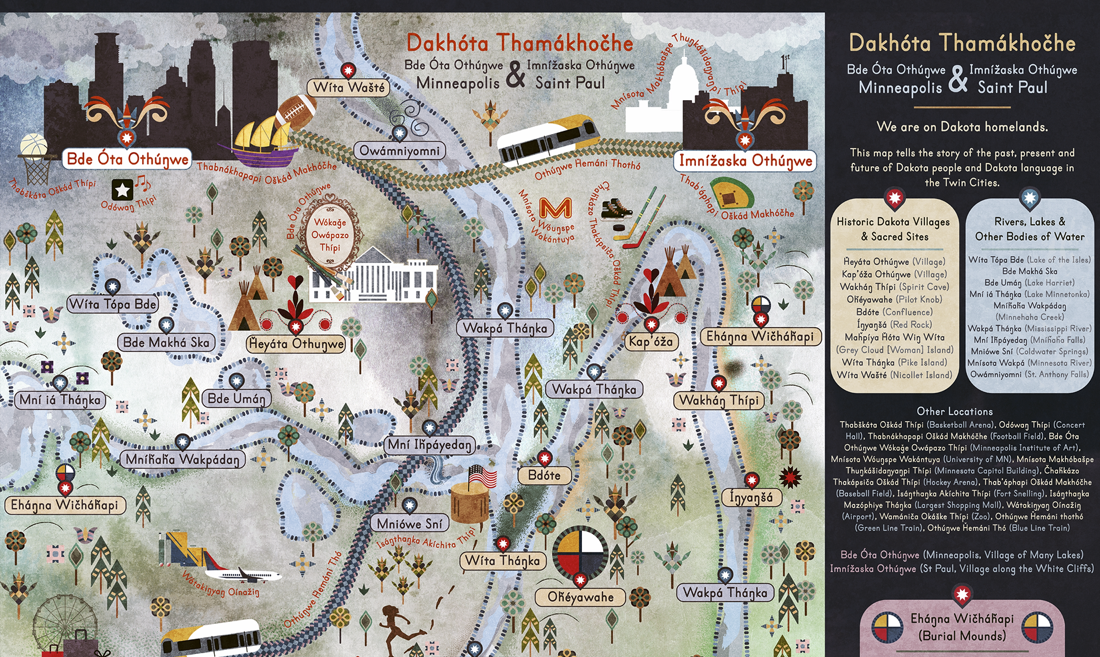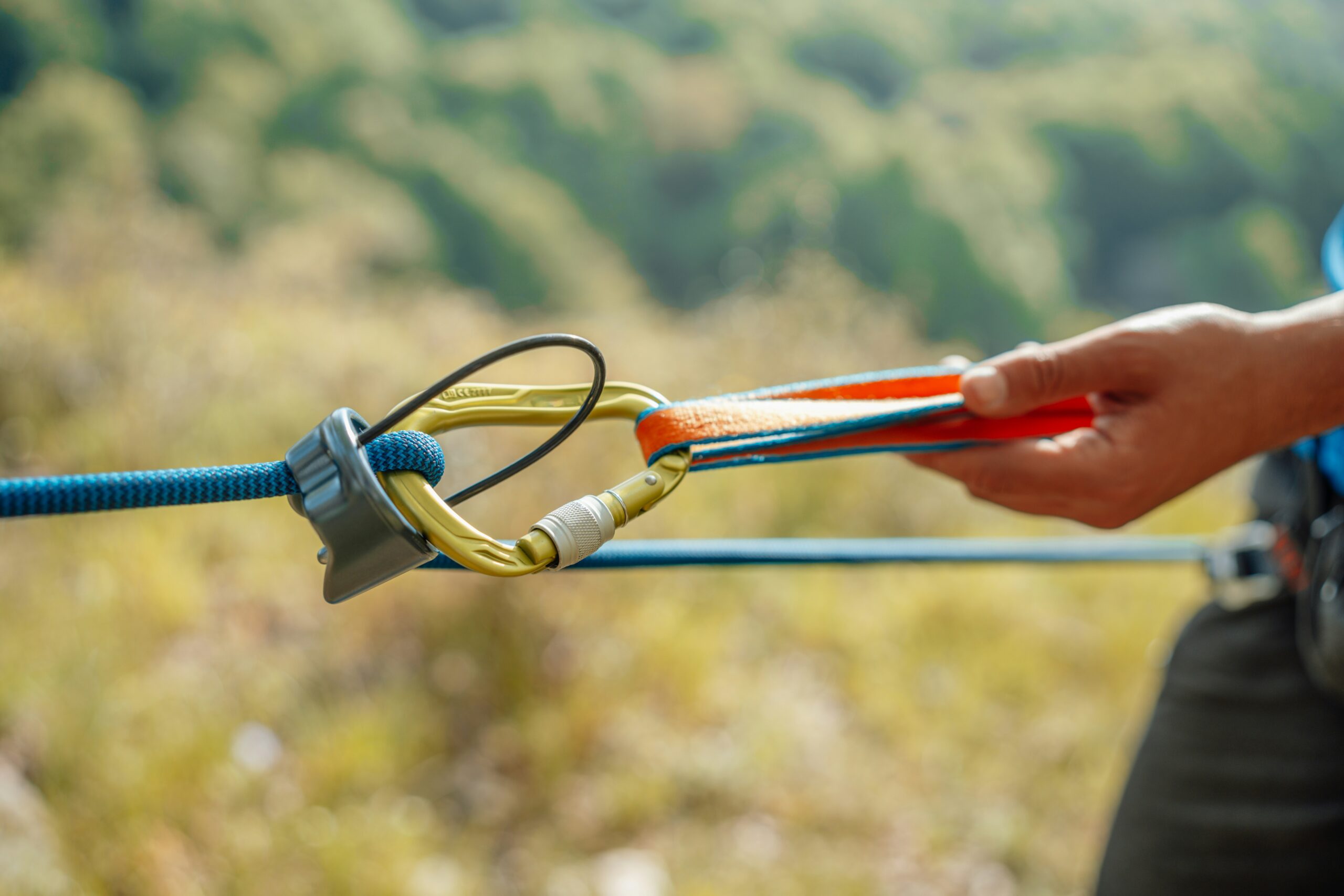The featured image above is a free resource created by Marlena Myles, a Native American (Spirit Lake Dakota/Mohegan/Muscogee) artist based in Saint Paul, Minnesota. Marlena continues to create beautiful art that educates and honors Indigenous culture. Access her Dakota land map and accompanying audio to learn about the past, present, and future of the Dakota people.
On Monday, October 14th, Clockwork will be closed in observance of Indigenous Peoples’ Day, a day to recognize, celebrate, and honor the deep-rooted histories and cultures of the native communities who have lived on this land for thousands of years. This decision aligns with our values and reflects our commitment to acknowledging and elevating Indigenous voices, narratives, and contributions. It’s a day to pause and reflect on the rich history of this land and the people who have stewarded it across generations.
Clockwork’s roots run deep in Minnesota, and our building sits on land historically belonging to the Dakota, Ojibwe/Anishinaabe, and other Indigenous communities. The histories and traditions of these native peoples are deeply connected to the land we live and work on today. Recognizing their legacies not only helps us understand Minnesota’s true identity but also allows us to appreciate the lasting influence of Indigenous cultures, traditions, and languages that have shaped our region.
Indigenous Peoples’ Day began as a day of remembrance and recognition for Indigenous populations, offering a counter-narrative to Columbus Day by acknowledging the historical and present-day significance of native communities. Minnesota officially adopted the day in 2016, reinforcing the state’s growing commitment to inclusivity and respect for Indigenous heritage. This observance serves as a reminder of the immeasurable contributions Indigenous communities have made to our state’s culture, economy, and industry, and it’s a call to reflect on both their challenges and achievements.
Closing our office is not simply symbolic; it’s an active commitment to learning, supporting, and standing with Indigenous communities in Minnesota and beyond. We encourage our friends, neighbors, and colleagues to join us in taking time not only on Indigenous Peoples’ Day but throughout the year to reflect on, learn about, and honor Indigenous histories, cultures, and people. Their past, present, and future stories are invaluable, and it’s on all of us to ensure these truths are heard, recognized, and celebrated.
Ways to honor Indigenous Peoples’ Day
We’ve assembled a list of ways our staff might consider spending time on Monday—and any day—to honor Indigenous people. Perhaps this list will be of value to you in your businesses, communities, and families. Many of these activities also include links to celebrations or businesses you can visit and/or support; while this list is Minnesota-centered, many resources are available to anyone across the country.
Educate yourself
Spend the day reading books or articles by Indigenous authors or about Indigenous history, culture, and issues.
Birchbark Books and Native Arts
Five Ways To Learn About Native American Culture in Minnesota
Attend local events
Participate in community events celebrating Indigenous Peoples’ Day, such as parades, powwows, or ceremonies.
Attend the Indigenous Peoples’ Day Summit at Minneapolis College from 9 am – 12:10 pm.
Attend the Indigenous Peoples’ Day Rally at 1845 Franklin Ave E in Minneapolis from 11 am – 2 pm.
Attend the Owamni Falling Water Festival on Saturday, October 12, 2024 at Mill Ruins Park and Water Works Park.
Land acknowledgment
Take a moment to research and recognize the Indigenous peoples who originally lived on and cared for the land you now reside on.
A Guide To Indigenous Land Acknowledgment
Indian Mounds Regional Park
The Indigenous burial ground that is currently called “Indian Mounds Regional Park” has been a sacred site and place of burial for over a thousand years.
Support Indigenous art
Purchase or appreciate art from local Indigenous artists, whether online or in physical galleries.
Dakota Sacred Hoop Walk
Visit the Minnesota Landscape Arboretum to experience the Dakota Sacred Hoop Walk, an augmented reality art exhibition designed by Marlena Myles, Twin Cities Digital Artist and a member of the Spirit Lake Dakota tribe. Visitors use augmented reality to view digital images and audio at stops along the walk which honors, educates and connects visitors to Dakota history, culture and significance of the land through art and storytelling.
Mia Native American Heritage Art Collection
Two Rivers Art Gallery at the Minneapolis American Indian Center
Visit cultural sites
Take a trip to local Indigenous cultural centers, museums, or historical sites to learn more firsthand.
“We Move We Stay” Exhibit at the MN Science Museum
This permanent exhibit on Level 4 of the Science Museum displays objects and artifacts of generations of Dakota and Ojibwe people.
Our Home: Native Minnesota at the Minnesota History Center
The Wodakota Walk at Caponi Art Park
Wodakota means “Harmony and Peace with all in the Universe.” This new interactive art installation by Marlena Myles, a local Native American (Spirit Lake Dakota/Mohegan/Muscogee) artist, offers five stops that weave Dakota stories into the landscape of Caponi Art Park using digital art, animation, and sound.
Watch documentaries
Stream documentaries that focus on Indigenous history, struggles, and accomplishments.
Powerful Documentaries Honoring Indigenous Peoples
Listen to Indigenous music
Explore music from various Indigenous cultures, whether it’s traditional, contemporary, or a blend.
Indigenous Musicians You Should Listen To Now
Support Indigenous-owned businesses
Buy from Indigenous-owned shops, eateries, or online stores.
Decolonize your shopping list with these Twin Cities Native businesses year-round.
Explore Indigenous crafts and art
Learn a traditional craft or art form, ensuring that it’s done respectfully and with an understanding of its significance.
Indigenous crafts and art books
Cook traditional foods
Research and prepare a dish from an Indigenous culture, understanding its history and significance.
The Sioux Chef’s Indigenous Kitchen by Sean Sherman
Go for a nature walk
Take a mindful walk in nature, reflecting on the Indigenous principle of land stewardship and interconnectedness.
Donate
Contribute to Indigenous causes, organizations, or initiatives that resonate with you.
Nine Best Charities for Native Americans
Engage on social media
Share educational resources, stories, or highlights about Indigenous Peoples’ Day, amplifying Indigenous voices and perspectives.
Join online workshops or webinars
Attend virtual events focusing on Indigenous history, rights, and current issues.
National Museum of the American Indian upcoming interactive courses
Reflect and meditate
Dedicate time to meditate on Indigenous peoples’ resilience, struggles, and contributions.
Listen to Indigenous voices and stories
Listen to Indigenous podcasts or online storytelling sessions.
Plant a tree or garden
In the spirit of honoring the land, consider planting native trees or plants, understanding their significance in the local ecosystem.
Locally grown, native seed plants and trees
Engage with local tribes
Reach out to local tribes or Indigenous communities to learn more about how you can support them, not just on this day but year-round.




